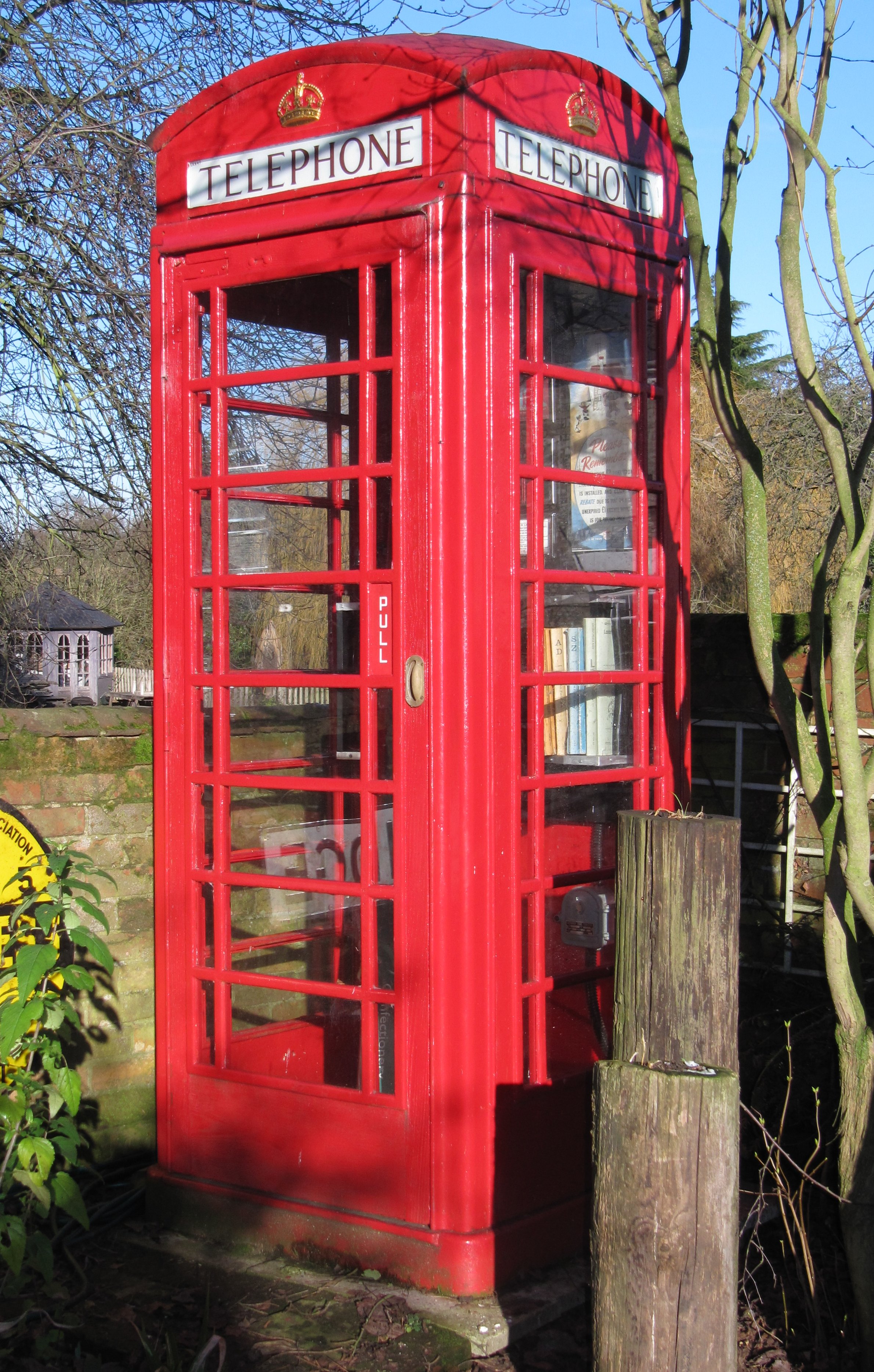Home|Features Index | View the Highlights |Where to buy | Where to Visit | For Schools | About Us | Events
|
|||||||||||||||||||||||||||||||||||||||||||||||||
K is for KioskA Short History of the Telephone KioskThe GPO used the designation K for Kiosk to describe their public telephone booths. K1 was introduced soon after the former assets of the National Telephone Company (A private Franchise) were nationalised to form Post Office Telephones (Later Telecommunications) at the end of 1911. NTC had operated a ramshackle selection of different Call Office styles during its 31-year licence period. A review of these identified the pattern in use in Birmingham as most suitable as the basis of a national kiosk. However, WW1 intervened and it was not until 1921 that the first Kiosk K1 was introduced. It was made of concrete panels with a wooden door and in the Mk234 version, wooden window frames. These were changed to metal in the Mk235. In 1927 the design was modified again to make it more like the newly-introduced K2. This meant deeper window framing and revised roof signage. It became the K1 Mk236.
The K2 was designed by Sir Giles Gilbert Scott and was the product of a Commission on Fine Arts competition held in 1924. Scott's new box was made of cast iron throughout and weighed over 1 ton. It cost more than 50 to make too, so the GPO decided that only London would get K2 boxes with very few exceptions. A handful escaped to the Provinces, notably Oxford. All K2 boxes are listed buildings. There are several dotted around the UK in private collections and museums.
Next in line was a compromise between the spacious and imposingK2 and the cheapness of the concrete K1. This was to become the K3, introduced in 1929 and running to some 12000 examples eventually. However, concrete proved to be expensive to maintain in the longer term, compared with cast iron. Consequently all of the K3 boxes were replaced bar just two which survive on the street. K5, introduced in 1934 was a completely knocked-down call office designed for temporary use at public events. None survive. The Post Office modified Scott's K2 design by stretching it to accommodate a posting suite comprising two stamp vending machines (normally B4 1/2d and B4 1d) together with a post box. This increased the weight to 1.5 tons and required clear access at both ends, making it hard to find suitable sites. Only one batch of fifty, ordered in 1927, was ever installed. 10 survive, four in public use. It was quickly nicknamed The Vermillion Giant.
The aesthetics of the K2 and smaller size of the K3 were combined into the next design, also by Giles Gilbert Scott. The K6 is the definitive English telephone box. About 70000 were installed from 1936-1965 including four major design changes. From 1936-1952 the boxes sport the Tudor crown of George V, from 1953-55 they show either The Scottish Crown or St Edwards Crown. From 1955-65 the crown is on a removable slotted tablet. Boxes from the original 1936 Jubilee Kiosk programme of 8000 boxes have the entry and exit holes for the cable runs on opposite sides of the rear base of the box. From 1939, improved security measures called for a redesign that saw window frames rivetted rather than screwed, improved coin box fixings and the cable runs now brought together on one side of the box. Any surviving K6 can be designated as a Grade II listed Structure. Boxes for use in areas of outstanding natural beauty, such as Rothley Station below, could be painted Dark Battleship Grey with PO red window bars.
During 1967, the GPO trialled the K7, producing just six boxes at three locations. This was made in anodised aluminium and used windows fitted in rubber gaskets rather like a car. They were not adopted and the prototypes continued in service for around 20 years. Two survive in preservation. Finally, a return to cast iron, but in a much simplified form with large single pane windows heralded the arrival of K8 in 1968. Designed by Bruce Martin, this was the last production series GPO phone box; the KX series coming after privatisation to British Telecom. About 11000 K8 boxes were installed and all but 12 (according to the 20th Century Society) have now been removed making this box as rare as the K3 in situ. Yate near Bristol was the last known working location your author saw (2003). Others include Holderness, Kimble and apparently, Swindon, which is reputed to have four left. Most were replaced by the first standardised BT kiosk - KX100 in 1984.
OUR K6 JUBILEE KIOSK RESTORATION
|
|||||||||||||||||||||||||||||||||||||||||||||||||


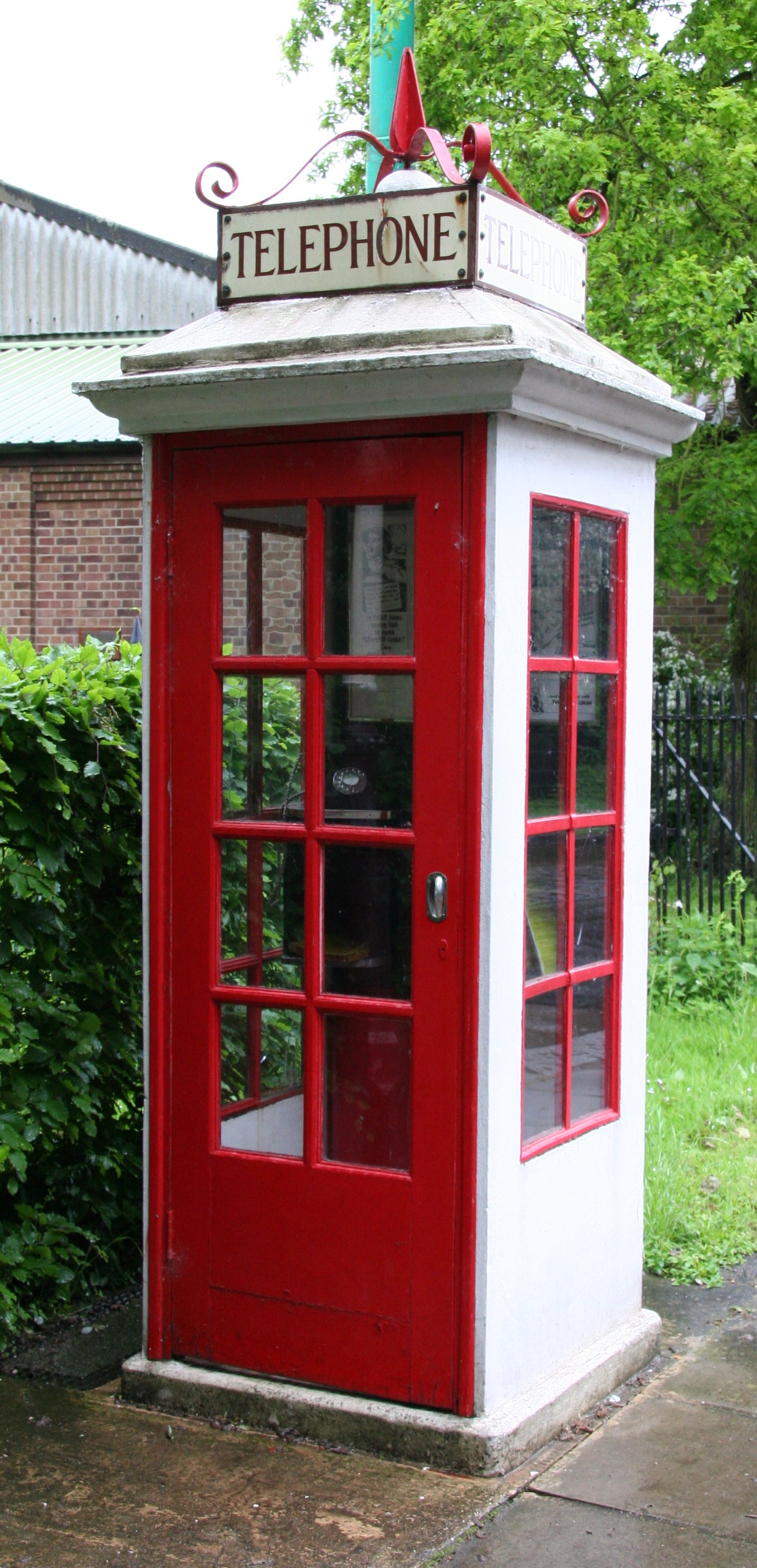


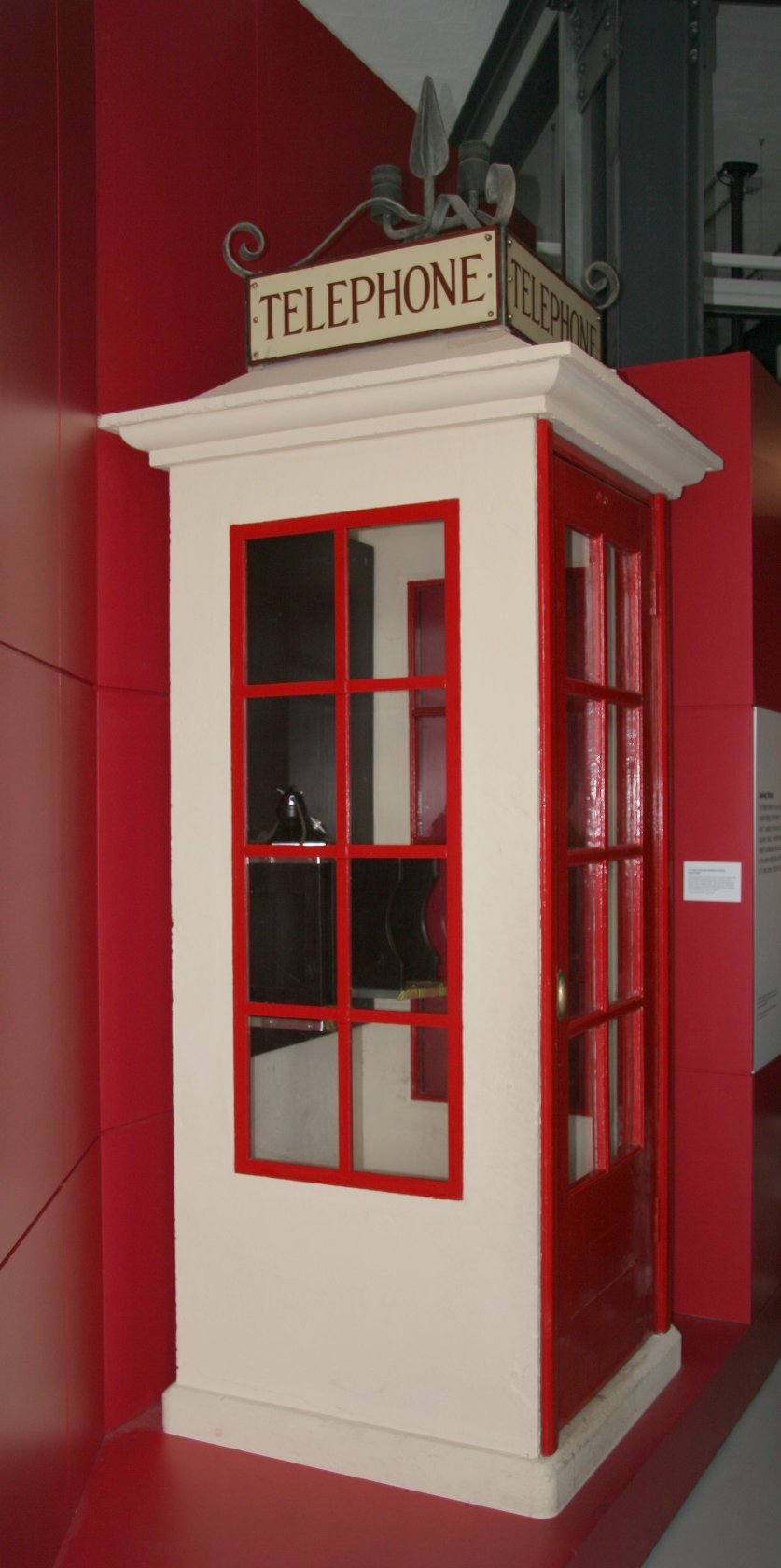




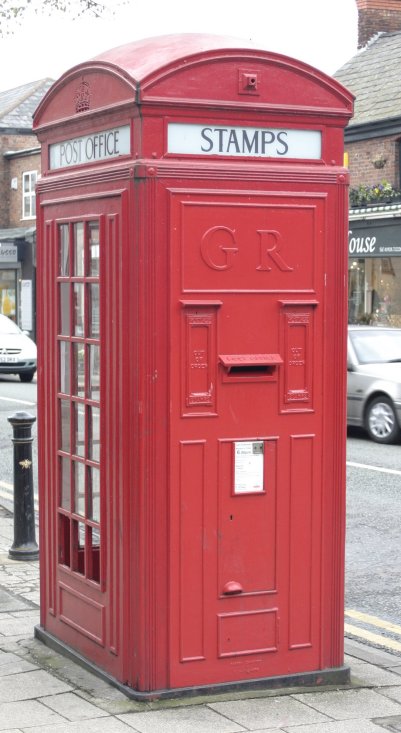









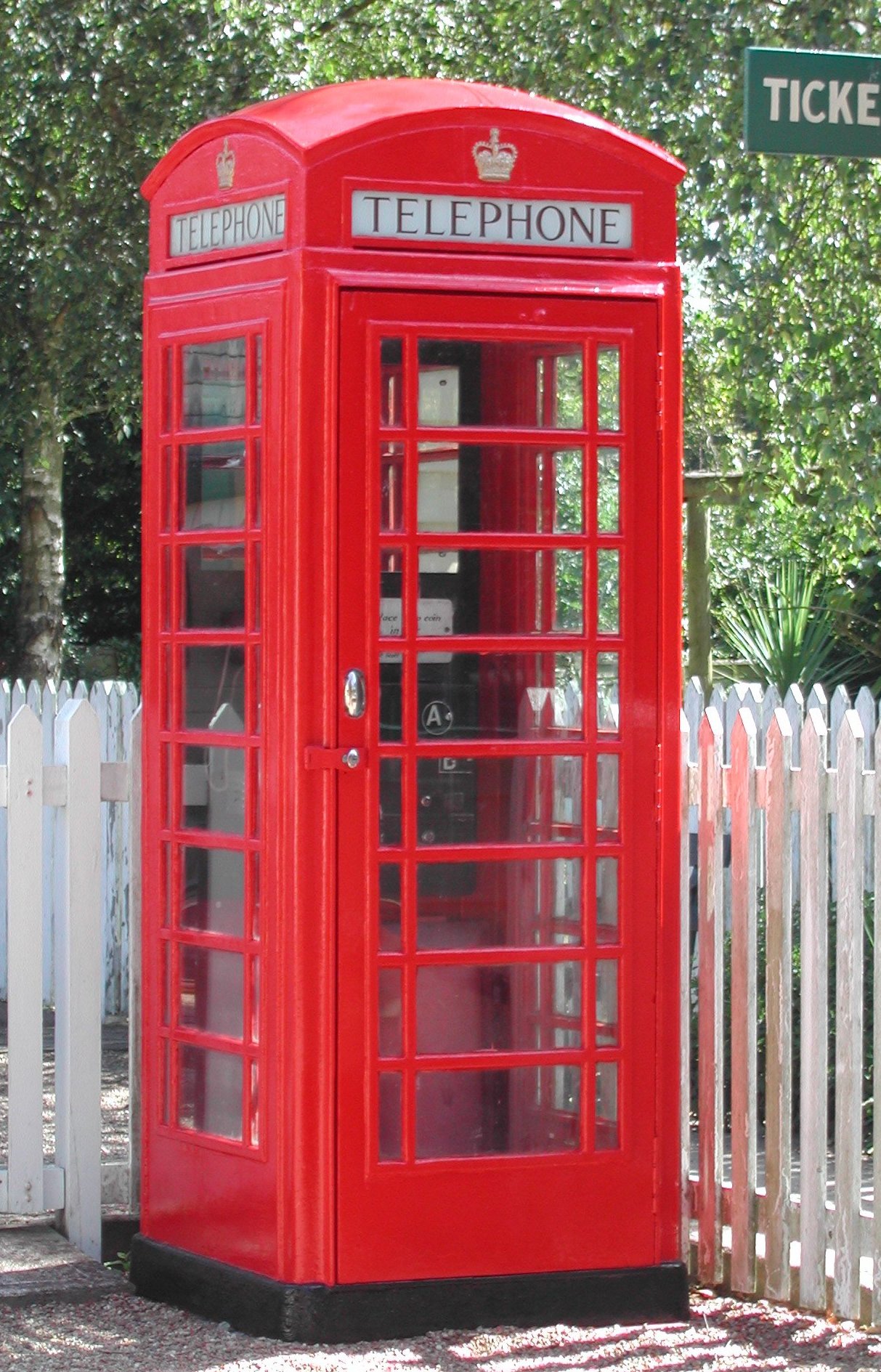











 Jubilee Interior of K6 at Amberley Working Museum, Sussex
Jubilee Interior of K6 at Amberley Working Museum, Sussex A K8 in use by LUL at Acton Town station
A K8 in use by LUL at Acton Town station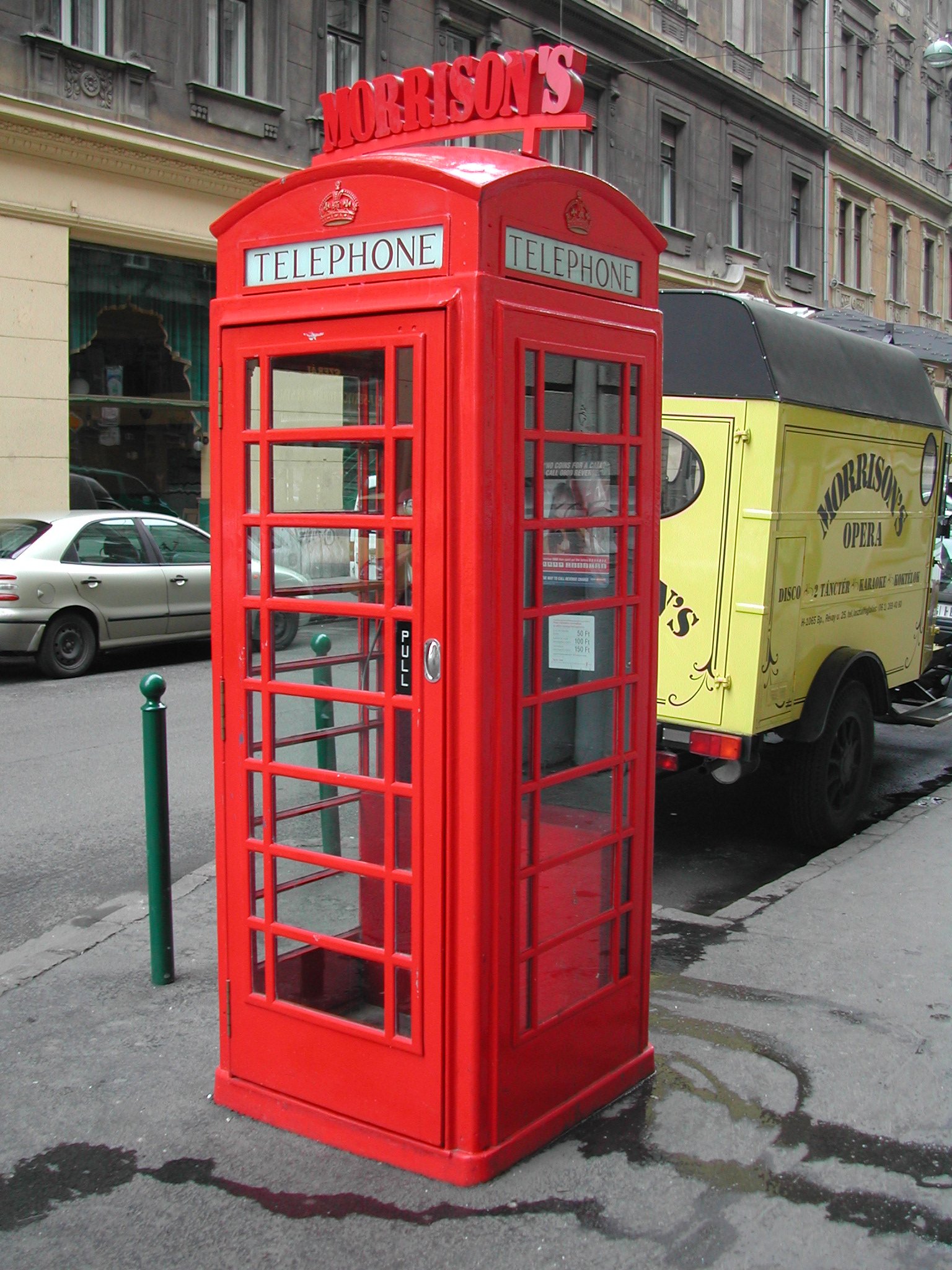 K6 advertising a restaurant in Budapest, Hungary
K6 advertising a restaurant in Budapest, Hungary

